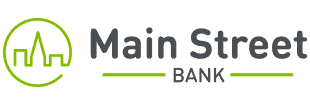Your virtual meeting may be hindering your productivity. When face-to-face meetings are not an option, your remote meetings need to have a structure and planned agenda to be impactful.
Here’s the scenario: you’re dialing into a video conference with your team, and the grid of faces pops up – except, you can see just the top fourth of one person’s head, another teammate’s cluttered living room behind them, someone looks like they’re trying to talk but is muted, and in the distance, a dog is barking. Is this a familiar scene? We have all been there!
Many employers have had to adjust how they hold meetings, both with coworkers and clients. More than ever, we have all had to use some form of video conferencing software, and it has become clear that some calls go more smoothly than others.
If you do not have a virtual meeting platform already, there are many options to choose from, ranging in price, functionality, and performance. Your selection of platform and plan should be based upon your anticipated usage and the size of your business. While Main Street Bank does not endorse any one particular solution, some examples of video conferencing software available are:
- Zoom Meetings – with options that range from basic free service to more advanced annual packages (typically no more than $300 per year)
- Microsoft Teams – with similar functionality to Zoom, there are also free plans, or plans that have a per-user monthly cost
- GoToMeeting – while there is no free package available, a basic plan with a low monthly flat cost does provide unlimited meetings with no time limits
- WebEx – another option for both meetings and webinars, and has a free basic plan for a limit of one host, up to multiple hosts with a per-user monthly cost
As with any meeting, an effective virtual meeting involves planning, preparation, and best practices. You can rock your next video call by following these tips.
Plan Ahead
- Send a meeting link to your client or prospect at least 24 hours in advance (or as soon as possible) to allow individuals ample time to test the platform for compatibility
- If you are inviting other employees, provide the same advance notice so they can be prepared
- Send any documents, links, or other items in advance of the meeting
- Identify a quiet location free of distractions and background noises where you will join the call
- Ensure the location is well-lit so others can see you clearly
- Ensure your environment is neat, uncluttered, and professional-looking (a neutral-colored wall or tidy bookcase work well as a backdrop to virtual calls)
Before the Virtual Meeting Starts
- Dress professionally
- Have a planned agenda and stay true to the timeline to keep the meeting moving
- Log into the meeting at least 5-7 minutes early
- Test your microphone and speakers
- Make sure your background looks clean, professional, and realistic; if this is not an option where you are, apply an appropriate digital background image
- Apply other meeting settings as necessary (such as suppress attendee announcements, etc.)
- Position yourself near the webcam so your face fills 2/3 of the screen to ensure good eye contact; avoid extreme camera angles
- Close other applications on your computer that may make noise and silence your phone
During the Meeting
- Start the call with introductions for anyone on the line who has not met
- Use your best judgment to determine if eating or drinking may be appropriate; if meeting with a client or prospect, avoid having food or drink to maintain a professional appearance without distractions
- If you have co-workers or team members on the call, select one person to keep notes of anything discussed during the call
- Always face the camera and speak clearly
- Avoid fidgeting with your keyboard or other objects
- Mute yourself when you are not talking
- Do not interrupt others while they are speaking
- Stay seated and be present
- Keep the meeting professional
- Stay on schedule, and do not allow the meeting to run over the time allotted unless you get explicit permission to go over time from all participants; do not go over the allotted time by more than 15 minutes
- Have an effective wrap-up (reconfirm action items, commitments, and clearly outline next steps)
After the Virtual Meeting
- Follow-up with any unanswered questions
- Make good on any actionable items or commitments
- Follow through with any next steps indicated
The Takeaway
Virtual meetings and video conferencing tools allow for the opportunity to build meetings into your schedule without the added travel time and can help you to make connections with people you may not have been able to make in person before. Used properly and consistently, virtual meetings can increase your employees’ productivity and bring in new business connections for your organization. Moreover, your business will not be able to compete with other employers who have adapted their strategies to include more effective video technology.
Would you like to receive more information from us? Sign up for our email newsletter to get the latest news, announcements, and information from Main Street Bank.
Please enable javascript to register.

